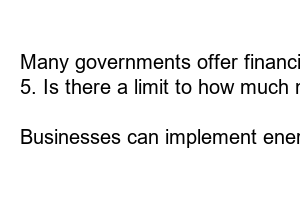전기요금 인상
Title: Unveiling the Impact of Electricity Rate Hike: Understanding the Reasons and Solutions
Introduction:
Electricity bills have a notorious reputation for causing frustration and surprise among consumers. With recent rate hikes, it is crucial to understand the reasons behind this global issue and explore potential solutions. In this blog post, we will delve into the factors influencing electricity rate increases, analyze the consequences for households and businesses, and provide recommendations to alleviate the burden on consumers.
1. How did Electricity Rates Surpass Expectations?
As electricity providers strive to improve infrastructure, expand renewable energy sources, and reduce pollution, the cost of operations and maintenance has escalated. This, in turn, has led to an increase in electricity rates across the board, impacting consumers.
2. Factors Contributing to Rising Electricity Costs:
a) Renewable Energy Investments: Governments worldwide are investing in renewable energy sources, increasing the share of wind, solar, and hydroelectric power generation. While this shift is commendable and essential for a sustainable future, initially, these investments are reflected in higher electricity rates.
b) Infrastructure Development: Over time, power grids, transformers, and other electrical infrastructure require significant upgrades and maintenance, resulting in increased costs that are passed onto consumers.
c) Fluctuating Fuel Prices: Traditional power plants heavily rely on fossil fuels, causing electricity prices to fluctuate with the variations in oil, coal, and natural gas prices.
3. Analyzing the Impact of Rising Electricity Rates:
a) Increased Financial Burden on Households: Higher electricity rates directly contribute to a surge in household expenses, leaving less disposable income for essential needs, such as food, healthcare, and education.
b) Adverse Effect on Businesses: Rising energy costs pose a significant challenge for businesses, especially small and medium enterprises, squeezing profit margins and limiting their ability to expand and create new job opportunities.
4. Addressing the Issue:
a) Energy Efficiency Measures: Adopting energy-efficient appliances, insulating homes, and implementing best practices can significantly reduce electricity consumption and lower bills, offering long-term cost savings for consumers.
b) Embracing Renewable Energy: Encouraging the use of solar panels, wind turbines, and hydropower can help offset electricity costs, reduce dependency on fossil fuels, and contribute to a greener environment.
c) Government Interventions: Policymakers need to implement initiatives such as subsidies, tax incentives, or regulations to promote affordability and accessibility of electricity, particularly for low-income households.
5. Future Projections and Solutions:
As technology advances and renewable energy becomes more cost-effective, there is hope for stable and affordable electricity rates in the future. Accelerating research and development in energy storage solutions and innovative energy generation methods will help alleviate the burden on consumers and pave the way for a sustainable energy future.
Summary:
Electricity rate hikes are a global concern impacting individuals and businesses alike. Factors like renewable energy investments, infrastructure development, and fluctuating fuel prices contribute to rising costs. While higher electricity rates burden households and restrain business growth, embracing energy efficiency measures, renewable energy sources, and government interventions can provide solutions to mitigate this challenge. It is crucial to prioritize sustainable practices and technological advancements for a more affordable and environmentally friendly energy economy.
FAQs:
1. Can switching to renewable energy lower my electricity bill?
While the initial investment may be significant, switching to renewable energy can bring long-term cost savings, reducing or even eliminating your electricity bill.
2. How can I reduce my household’s electricity consumption?
Implementing energy-efficient practices, such as using LED bulbs, turning off appliances when not in use, and optimizing home insulation, can substantially reduce your electricity consumption.
3. Are electricity rate hikes the same globally?
Electricity rates vary across countries due to factors like geographical location, energy sources, government policies, and socio-economic conditions.
4. Will governments provide financial assistance during electricity rate hikes?
Many governments offer financial assistance programs, tax incentives, and subsidies to support consumers during times of electricity rate hikes. Check with your local authorities for available options.
5. Is there a limit to how much my electricity bill can increase?
There might be regulations in place to prevent sudden or exorbitant spikes in electricity rates. However, understanding your jurisdiction-specific regulations and monitoring your bill regularly can help you stay informed.
6. How can businesses cope with rising electricity costs?
Businesses can implement energy management strategies, seek out energy efficiency consultants, and explore renewable energy options to mitigate the impact of rising electricity costs on their profit margins.

